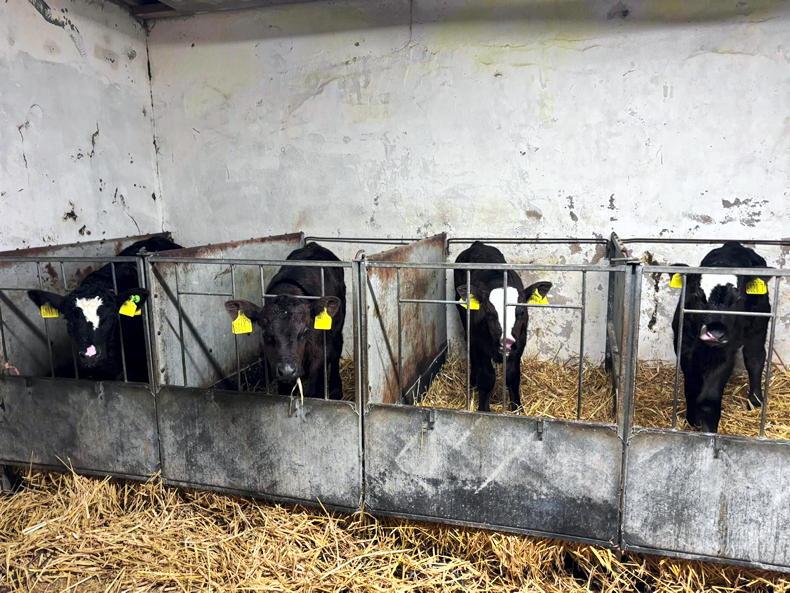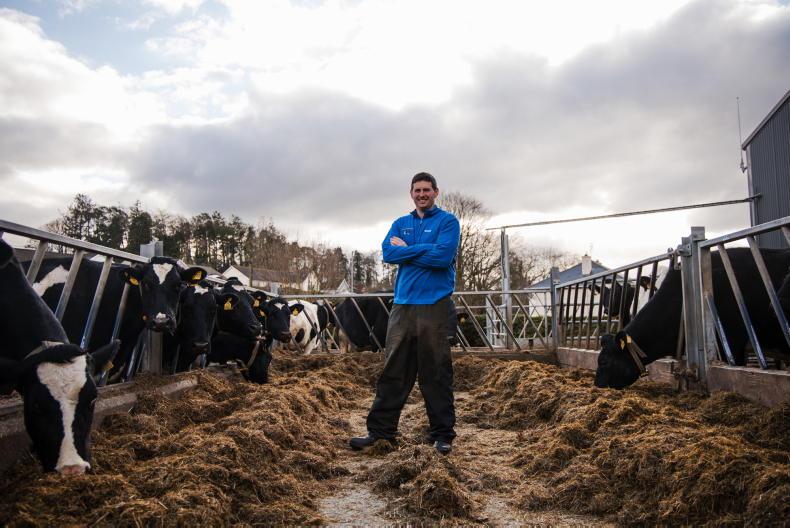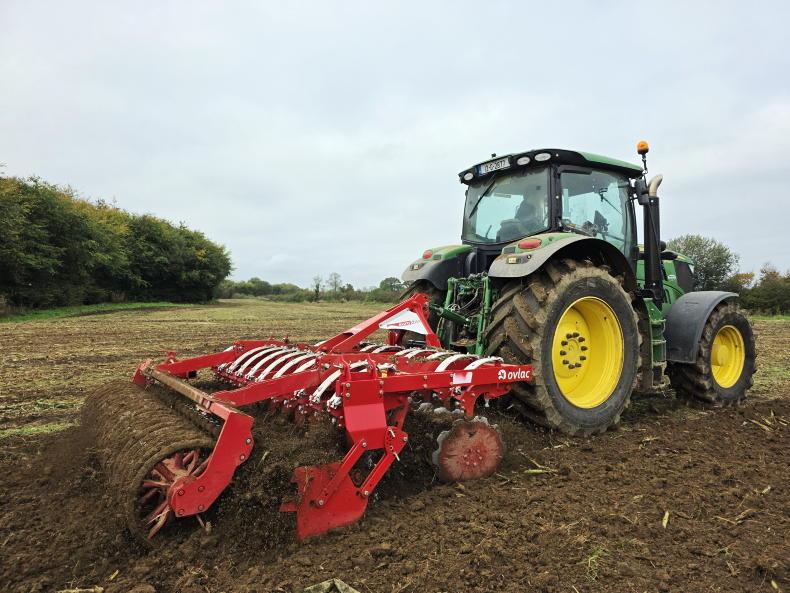Rain has dominated weather conditions since the second week of June, making the ground far from ideal for reseeding. However, there have been isolated windows of dry weather that allowed some farmers to get small areas of new grass established.
The challenge for these farmers in the month ahead is to manage the emerging grass seedlings and prevent damage to the new swards.
With little sign of the weather improving in the week ahead, undertaking this task should not be underestimated.
Outlined are five queries raised by farmers with plans for reseeding grass this summer, along with some advice that may help manage new swards.
Option one
I have grass burned off for reseeding. But with conditions being so wet, what are my options?
Where grass was burned off recently, and ground is too wet to work, there is little choice but to wait until drier weather materialises. With short windows for working fields, give greater thought to a direct-drilling or stitching method to sow grass seed. Such methods create less disturbance to the ground, leaving the soil surface intact.
However, it may be worth subsoiling before drilling, to alleviate soil compaction. Once new grass emerges, firm soils are better placed to carry grazing livestock going into autumn.
Waiting for ground to dry adequately before ploughing, tilling and sowing grass under a conventional reseed will take considerably longer. Also, there is no guarantee that such a weather window will present itself.
Option two
Surface water is lying on reseeded paddocks, will this stop grass seed germinating?
If there are areas in a field where surface water lies, it is a sign soils are compacted or there is a drainage issue.
All being well, if the water does soak within 24 to 48 hours, grass seed should be okay and will germinate as normal.
New grasses may be water stressed, so target with nitrogen, phosphorous, potash and sulphur when ground and weather conditions permit. But if surface water tends to lie for a longer period of time, there is a strong chance that grass seed in such areas with not grow and overseeding will be necessary.
Ideally, drainage and compactions will have been addressed before reseeding. But if not, mark these fields for such jobs as soon as possible.
Option three
If ground is too soft for spraying, what are my options for weed control?
One advantage of a summer reseed is that weeds tend to be less problematic, compared with spring reseeds. That said, if left unchecked, weeds can quickly get a foothold. Chickweed and redshank are common weeds when reseeding grassland. Both can be controlled by aggressive grazing management, without the use of any form of chemical treatment.
Short, swift grazing periods where the sward is repeatedly cleaned down to 4cm in a 24 to 48 hour period by cattle and sheep will help achieve this, as new grasses will outcompete weeds.
The key is to put enough stock on the reseed to graze tight in such a short period, without causing damage to the sward, then rest the new sward for three weeks. Docks are less inclined to smother new grasses in the manner that chickweed and redshank can. So a chemical treatment in late summer may work. Using a stitching or direct drilling method will also help reduce weed burdens, due to lower levels of soil disturbance.
Option four
How quickly can I graze a reseed in wet conditions?
As a rule, when new grass plants cannot be pulled from the soil by hand, then grass is safe for grazing.
This tends to be when a new sward is around 6cm to 8cm in height. However, ground conditions have to be able to carry stock, so wait until soils are firm enough to carry light animals.
Option five
What stock should I use for grazing reseeds?
For the first grazing, the lighter the stock the better, as they will cause less ground damage. Ideally, opt for calves or recently weaned lambs.
Dry ewes are the next best option, followed by weanlings or yearling store cattle. Cows are the last resort, unless ground conditions greatly improve.
If stock options are limited, talk to a neighbour about grazing with calves or lambs. It may be hassle, but if it causes less damage and gets weeds under control, it will be worth it.
As mentioned earlier, the key is to apply plenty of grazing pressure in a short period to graze reseeds down without causing surface damage. Make sure to rest the reseed for at least three weeks before grazing again.
In some instances, taking a light cut of bales in early autumn can work. Mow between 4cm and 6cm, keep travelling within the field to a minimum, and apply slurry to replace the P and K offtake.
Read more
Five tips for harvesting second-cut silage in difficult weather
Keep on top of magnesium supplementation in wet conditions
Rain has dominated weather conditions since the second week of June, making the ground far from ideal for reseeding. However, there have been isolated windows of dry weather that allowed some farmers to get small areas of new grass established.
The challenge for these farmers in the month ahead is to manage the emerging grass seedlings and prevent damage to the new swards.
With little sign of the weather improving in the week ahead, undertaking this task should not be underestimated.
Outlined are five queries raised by farmers with plans for reseeding grass this summer, along with some advice that may help manage new swards.
Option one
I have grass burned off for reseeding. But with conditions being so wet, what are my options?
Where grass was burned off recently, and ground is too wet to work, there is little choice but to wait until drier weather materialises. With short windows for working fields, give greater thought to a direct-drilling or stitching method to sow grass seed. Such methods create less disturbance to the ground, leaving the soil surface intact.
However, it may be worth subsoiling before drilling, to alleviate soil compaction. Once new grass emerges, firm soils are better placed to carry grazing livestock going into autumn.
Waiting for ground to dry adequately before ploughing, tilling and sowing grass under a conventional reseed will take considerably longer. Also, there is no guarantee that such a weather window will present itself.
Option two
Surface water is lying on reseeded paddocks, will this stop grass seed germinating?
If there are areas in a field where surface water lies, it is a sign soils are compacted or there is a drainage issue.
All being well, if the water does soak within 24 to 48 hours, grass seed should be okay and will germinate as normal.
New grasses may be water stressed, so target with nitrogen, phosphorous, potash and sulphur when ground and weather conditions permit. But if surface water tends to lie for a longer period of time, there is a strong chance that grass seed in such areas with not grow and overseeding will be necessary.
Ideally, drainage and compactions will have been addressed before reseeding. But if not, mark these fields for such jobs as soon as possible.
Option three
If ground is too soft for spraying, what are my options for weed control?
One advantage of a summer reseed is that weeds tend to be less problematic, compared with spring reseeds. That said, if left unchecked, weeds can quickly get a foothold. Chickweed and redshank are common weeds when reseeding grassland. Both can be controlled by aggressive grazing management, without the use of any form of chemical treatment.
Short, swift grazing periods where the sward is repeatedly cleaned down to 4cm in a 24 to 48 hour period by cattle and sheep will help achieve this, as new grasses will outcompete weeds.
The key is to put enough stock on the reseed to graze tight in such a short period, without causing damage to the sward, then rest the new sward for three weeks. Docks are less inclined to smother new grasses in the manner that chickweed and redshank can. So a chemical treatment in late summer may work. Using a stitching or direct drilling method will also help reduce weed burdens, due to lower levels of soil disturbance.
Option four
How quickly can I graze a reseed in wet conditions?
As a rule, when new grass plants cannot be pulled from the soil by hand, then grass is safe for grazing.
This tends to be when a new sward is around 6cm to 8cm in height. However, ground conditions have to be able to carry stock, so wait until soils are firm enough to carry light animals.
Option five
What stock should I use for grazing reseeds?
For the first grazing, the lighter the stock the better, as they will cause less ground damage. Ideally, opt for calves or recently weaned lambs.
Dry ewes are the next best option, followed by weanlings or yearling store cattle. Cows are the last resort, unless ground conditions greatly improve.
If stock options are limited, talk to a neighbour about grazing with calves or lambs. It may be hassle, but if it causes less damage and gets weeds under control, it will be worth it.
As mentioned earlier, the key is to apply plenty of grazing pressure in a short period to graze reseeds down without causing surface damage. Make sure to rest the reseed for at least three weeks before grazing again.
In some instances, taking a light cut of bales in early autumn can work. Mow between 4cm and 6cm, keep travelling within the field to a minimum, and apply slurry to replace the P and K offtake.
Read more
Five tips for harvesting second-cut silage in difficult weather
Keep on top of magnesium supplementation in wet conditions










SHARING OPTIONS